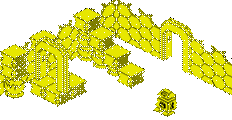Atari 7800 [ProSystem]
Vital Statistics
Introduced
1986 |
|
![]()
What's it like today?
|
The Atari 7800 ProSystem was first announced on 21st May 1984, and introduced quite a bit later in 1986. It was designed to put right what was done wrong with its predecessor, the 5200 Super System.
The 5200 was completely incompatible with the earlier 2600, which had become so popular. With thousands of games available for the 2600, the 7800 was designed with backward compatibility to the 2600 in mind. Hence, the 7800 can run almost all Atari 2600 games, plus all 2600 peripherals plug right in and work on the 7800.
Unfortunately, following the exciting announcement of the forthcoming 7800, Atari's home videogame division was sold off to Jack Tramiel of Commodore, who pulled the plug on the 7800 project. This coincided with the video game market crash with retailers cutting orders for consoles and games significantly due to rapidly falling sales. By early 1985, only Atari, Coleco and Mattel were ready to provide a new console to replace their older systems. Since the 7800 had already been released to a small test market, it was ready for general sale, which finally went ahead in 1986. Originally, 12 cartridges were announced for the launch of the 7800, but by actual launch only 3 games were made available, which showed Atari in a poor light for not delivering on their promises. This resulted in retailers being cautious to order the 7800 and associated games.
Technically, the Atari 7800 was a mixed bag. It ran a custom CPU that made the new machine capable of displaying 256 colours on-screen and move 100 objects (sprites) around the screen at the same time, but it still used the same old sound chip from the 2600 which really let it down. Some games cartridges overcame this by adding the 5200's POKEY sound chip directly into their cartridge circuitry.
One novel idea was the High Score cartridge that was advertised by Atari back in 1984 which would allow gamers to record their high scores direct from the cartridge plugged into it - something lacking on previous consoles. This product however, never made it to market.










